The Wivenhoe Society's first 25 years
This document was written by Nicholas Butler in 1991 to mark the Wivenhoe Society's first 25 years since its founding in 1966
Page created by Peter Hill
The following text has been re-typed from the document produced by Nicholas Butler to mark the 25th anniversary of the founding of the Wivenhoe Society in 1966.Thanks to Mrs Bonnie Hill for re-typing this text. This document was written in 1991 and, when published, included the maps of Wivenhoe in 1966 and 1991 and a projection of how Wivenhoe might grow past the year 2000.
By Nicholas Butler:
Amenity societies are generally formed as a reaction to a crisis, and that was how we began.
The upstream shipyard, whose recorded history spanned four centuries, finally closed in 1960 and five years later it was announced that a firm called K. Gliksten & Son Ltd. would use the site for a timber importing wharf. Light industry is what Wivenhoe needed then and needs now, and in itself this industry might prove to be a good one, but there were fears that the lorries used to transport the timber out of the town would clog the spinal route. So, on Friday, 14th January, 1966, a group of concerned people met at The Old Rectory and The Wivenhoe Society was born.
That meeting was chaired by George Gale, the gravel-voiced pundit from Fleet Street, and we must be grateful for the interest that he took in Wivenhoe and its affairs. Twenty-one years later Mr. Gale appeared at the Society’s coming-of-age party and paid tribute to Margery Dean, the good-humoured antiques dealer who did so much for the town. Very likely it was she who was the moving spirit behind this enterprise.
The meeting felt that Gliksten’s should not be allowed to use the whole of the saltings for storage of timber, the Wivenhoe Urban District Council felt the same way and the upshot was that the timber storage was restricted.
Had the brand new society helped to sway the local council? I rather think not, because from the outset and for some years thereafter the two bodies were tacitly opposed. The council felt that its authority in planning matters was being usurped; moreover while the councillors were for the most part Old Wivenhovians, The Wivenhoe Society members were newcomers. What did these people, who had not been in the town five minutes, know of the terrible depression between the wars when most of the townspeople were out of work? The newcomers, on the other hand, thought that the council was composed of lazy, complacent and somewhat incompetent people. So before the May elections the candidates were invited to attend a public meeting at which they could face the electorate and answer a few questions.
In 1968 Gliksten’s announced that it wanted to close the Rowhedge Ferry Road in order to conduct is business more efficiently. Feelings were mixed, with employees of the firm naturally very strongly in favour of the closure, though on the whole Wivenhoe wanted the road to stay open. Two public inquiries were held at the William Loveless Hall and it was decreed that the road should be closed.
At about the same time the owner of the Wivenhoe Wood submitted a planning application to build a housing estate among the trees. The Wivenhoe Society thought that the wood should be a public amenity and after another brace of public inquiries it was decided that it was not for building. To its credit the W.U.D.C. then bought most of it for the public
The Falcon was another early success. In May, 1971, the W.U.D.C. absent-mindedly decided that this building, the first recorded public house in Wivenhoe, which dated back to the seventeenth century, should be demolished to make way for a complex of shops and houses. The Society saw to it that it was listed and eventually it was converted into three maisonettes.
Yet the Society was already in the doldrums, for the plain fact that it was not yet sure of its aims and even less how to achieve them. Rather muddled and amateurish, the Society might well have fallen by the wayside. However, it was given a shot in the arm when an enterprising chairman, Walter Evans, made it a rule that one third of the committee members had to retire at the end of every year. From that day to this the Society has had to go out and look for fresh blood, whether it likes it or not and I believe it may have saved us from closure on more than one occasion.
This rule was made in 1978. Meanwhile The Urban District Council had been abolished and its successor, the Wivenhoe Town Council, had considerably diminished powers. It had been an oligarchy of locals with powers far beyond its deserts or understanding; now it was a pressure group, like us. Moreover, not only was there now a steady improvement in the standard of the men and women elected to the new council, but these people could look at the town objectively because they had not been born and bred here.
In 1981, Gliksten’s was succeeded by Wivenhoe Port Ltd., a company created by a Colchester-based firm and, rashly, it was given permission to import anything it liked. More and heavier lorries appeared on a spinal route never designed for anything larger than a coach and pair. So the Wivenhoe Society struggled to contain this nuisance and the eighties were marked by three important public inquiries.
The first, in the dog days of 1983, was to decide if this firm should build itself a warehouse or a bulk grain storage building or both. To its credit the Society fought hard, but it was decided that one of these buildings would generate no more traffic and so it duly appeared.
For the second inquiry the Society fully prepared itself by begetting an organisation called The Wivenhoe Preservation Trust, which knocked on every door in the town and raised £5000, the sum needed to pay for a barrister. There were three applications to be considered in January, 1985, two blinds and the real one, an application to store coal on the hand standings above the site. The blinds were perceived to be such and dismissed at the inquiry; the remaining application was refused.
At the final public inquiry – in the present series – held in 1988, the Inspector had two, mutually incompatible, applications in front of him: was he to allow a housing estate on the former shipyard or was the port to be extended? In the event he refused the latter, but gave a cautious assent to the former.
These inquiries taught us a great deal. We learnt that to make things happen cooperation is needed. For we did not fight them on our own, far from it. The Wivenhoe Town Council first of all set up a Co-ordinating Committee upon which we were represented, so that we could make quite sure that we did not tread on the toes of the other organisations which spoke at the inquiries: notably The Wivenhoe Sailing Club the now defunct Wivenhoe Port Action Group and, of course, The Wivenhoe Town Council. Each local group or society may have its sphere of influence, but these frequently overlap and provide not only the opportunity, but the necessity, of working together.
At the beginning of 1989, Anglia Water, (now The National Rivers Authority), announced that it wanted to build a surge barrier across the Colne at the site of the former downstream shipyard. So, again a Coordinating Committee was convened at the Council Offices, but since neither the Wivenhoe Town Council, nor the Wivenhoe Society, nor Wivenhoe generally could decide if they wanted a surge barrier at that site, a barrier upstream, a narrower downstream, river walls or nothing at all, the public inquiry that we demanded with one voice will surely allow the N.R.A. to build that barrier. At any rate, the matter has been thoroughly aired.
When the barrier is built much land will be released from the flood plain between here and Colchester, including both the upstream and downstream shipyard sites. Not surprisingly, the owners of both sites have submitted outline planning applications and, alas, the Colchester Borough Council has given permission for far too many houses: three hundred upstream and ninety downstream so that when we lose the lorries we shall gain cars quite enough of them to cause tailbacks up and down the High Street during the rush hours.
Meanwhile, a firm called McInerney Estates plc wants to build a business park and housing estate on 185 acres between Keelars Lane and the Cricket Club. Light industry would employ more Wivenhovians in Wivenhoe and in a time of dearth, such as the twenties and thirties, could easily change from one activity to another, so that people could be kept in work. On the other hand, is not Wivenhoe already large enough? Sainsburys wants to build a supermarket on university land. Undergraduates would welcome a decent store of a kind that the University of Essex has been too parsimonious to build for them and no doubt this, too, would employ Wivenhovians. On the other hand, how would this affect the shops in our High Street?
The answers are not always easy to find and our purpose is not to oppose, but to examine each proposed change to this town so as to secure the best deal for Wivenhoe out, of it. This community, which has trebled in size and numbers since The Wivenhoe Society was founded, needs amenities badly. We must see to it that the new development, when and if it occurs, will include them.
I have outlined our history, for I have no room in which to speak of the many things we have done in the past quarter of a century, such as the comments we make on planning applications, especially those in the conservation area, the numerous occasions on which we have helped to tidy up the town, in particular before the Best Kept Village Competitions, for which we, incidentally, started entering Wivenhoe in 1986, and in which we have won awards of which we are proud, of our tree-planting scheme of 1987 and the occasion on which we planted two thousand bulbs on greenswards all over the town, of the buildings, such as the former engine shed and stables in the station yard which we have had listed, of the donation we made to the Town Council to pay for one of the Welcome to Wivenhoe signs, of the many coach trips we have made, in particular one to see the Thames Barrier when we filled two coaches, and of our public meetings down the years, when we have enjoyed the wit and wisdom of men such as David Clarke, the former curator of the Castle Museum, and Arthur Brown, the local historian.
It has been hard work and much of it has been routine work, the endless task of lobbying councillors, ringing them up or writing to them, attending committee meetings at the Moot Hall, a silent but potent presence in the Council Chamber, organising traffic counts and compiling pages of statistics from them afterwards, personally delivering letters to every member of the Planning Committee by hand because there was not time enough to send them through the post, all the submissions we have made for public inquiries and letters, long ones, putting all the facts in the window, detailing the dust, dirt, noise and fumes from those lorries for the hundredth time, to ensure that we secure the best deal for us and our successors.
However, I think we have shown at our best when we have looked beyond our immediate interest. If we take pride in anything let it be in our attendance at the public inquiry about a matter in Rowhedge, when asked to by the newly formed Rowhedge Protection Group, that we have donated money for trees to be planted at the Cricket Club, that we, who are affiliated to The Council for the Protection of Rural England, have written letters on that body’s behalf about a proposed road through the New Forest and the sitting of the rail link from the Channel Tunnel to London.
Through twenty-five years we have learnt what it is that an amenity society does simply by doing it and we are still learning. It is not an esoteric activity, but one that anybody who loves this community and wants the best for his fellow citizens can join in. We have done a great deal, but there is much, much more that we ought to do. Will you help us?
Nicholas Butler

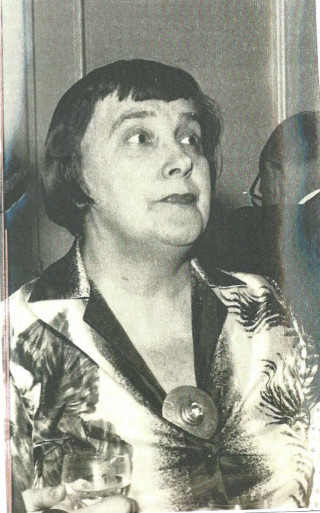
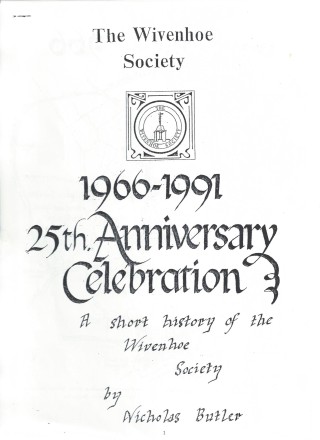
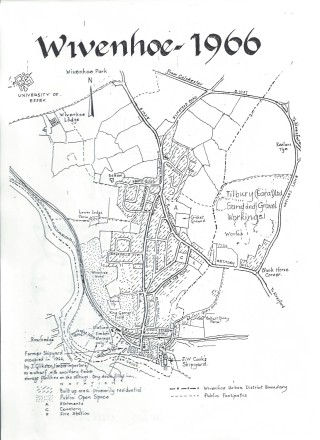
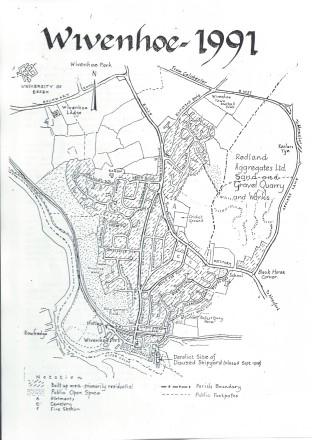
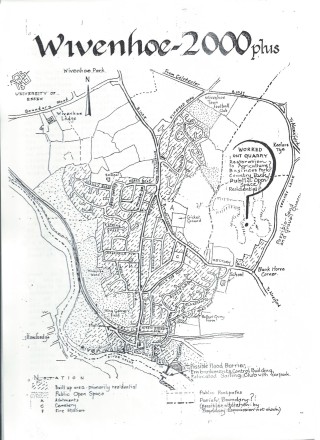





No Comments
Add a comment about this page